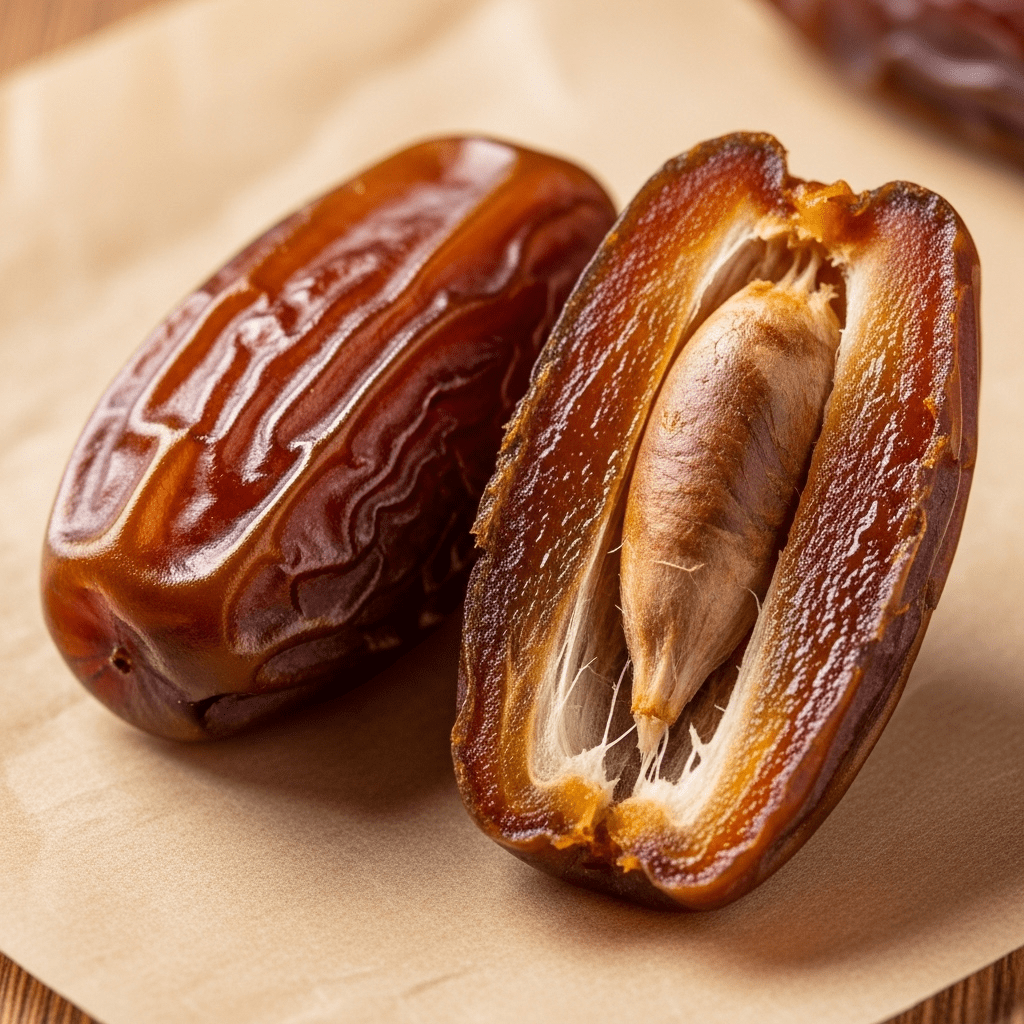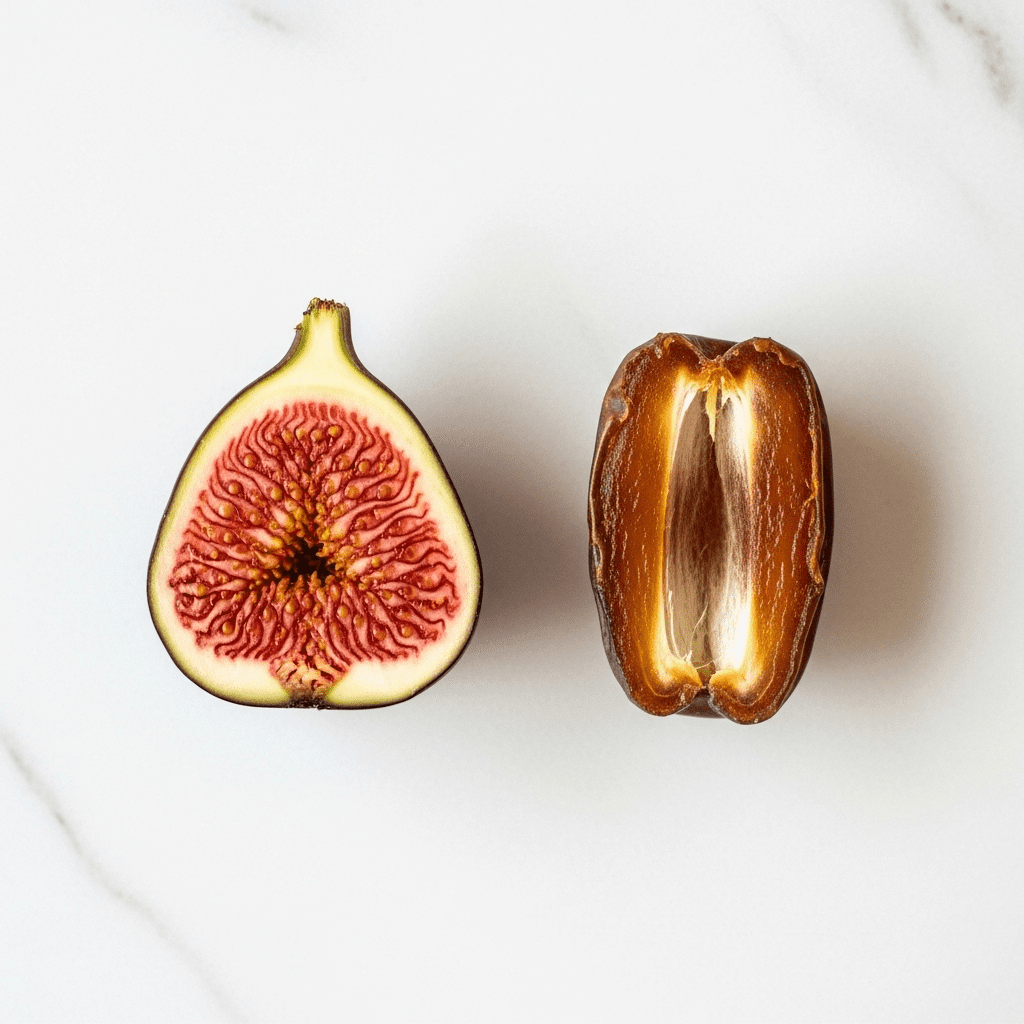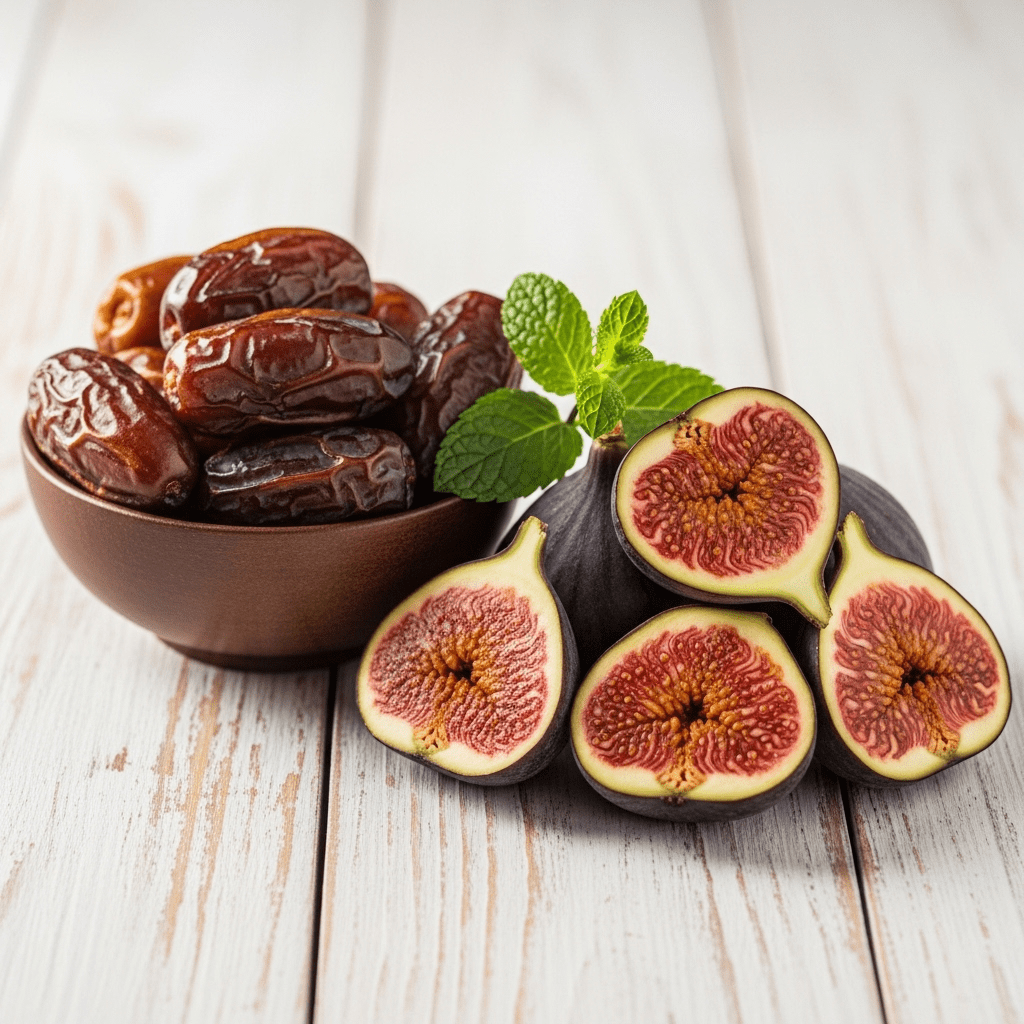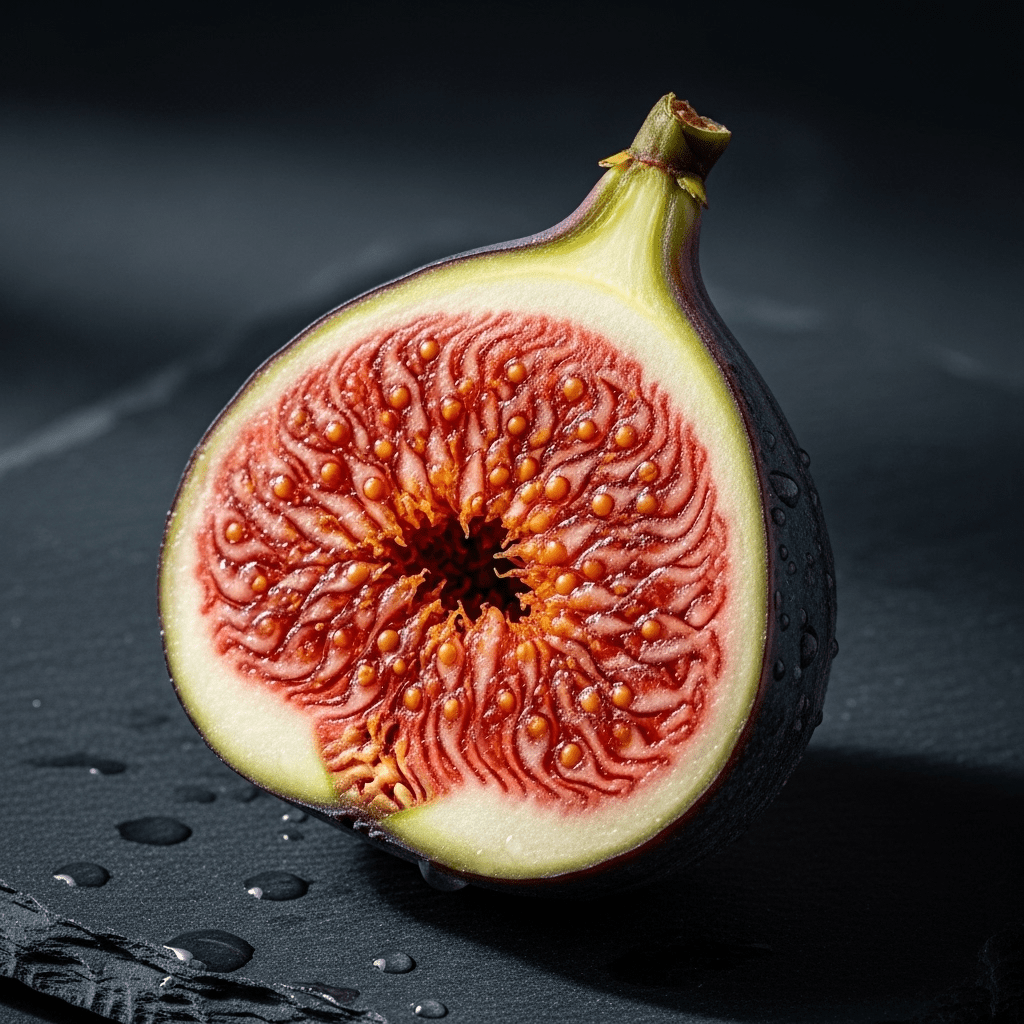Figs vs. Dates: A Dietitian Explains the Real Differences

It’s a common point of confusion in the world of sweet, whole foods: are figs and dates basically the same thing? Both are ancient fruits, beloved for their intense sweetness and chewy texture, making them fantastic natural alternatives to refined sugar.
But despite their similarities, they come from entirely different plants and offer unique nutritional profiles and flavors. As a Registered Dietitian, my goal is to help you understand your food better.
Let’s move beyond the surface-level similarities and explore the distinct worlds of figs and dates. We’ll look at what the science says about their health benefits, how their flavors differ, and how you can best use each one to elevate your meals and snacks.
- What Exactly Is a Fig?
- So Then, What’s a Date?
- A Head-to-Head Nutritional Showdown
- How Do They Affect Your Blood Sugar?
- Which Tastes Better, a Fig or a Date?
- Can You Swap Figs for Dates in Recipes?
- Creative Ways to Enjoy Figs
- Simple and Delicious Ways to Use Dates
- A Dietitian’s Verdict: Are They Really Healthy?
- Conclusion
What Exactly Is a Fig?

Here’s a fascinating piece of food trivia: a fig is not technically a fruit but an ‘inflorescence’—an inverted flower. The tiny, crunchy bits inside, which we think of as seeds, are actually the real fruits.
Fig trees (Ficus carica) have a unique relationship with a specific species of wasp needed for pollination, a process that results in the delicious ‘fruit’ we eat. Originally from Western Asia, figs thrive in Mediterranean climates and are highly perishable when fresh.
This is why we most often find them dried. They possess a complex flavor that’s a mix of honey, berry, and a subtle floral note, with a texture that is both chewy and satisfyingly crunchy from the seeds.
So Then, What’s a Date?

Dates are, unequivocally, fruits. They grow in large, heavy bunches on the date palm tree (Phoenix dactylifera), one of the oldest cultivated plants in human history, with roots in the Middle East.
Unlike figs, dates are true stone fruits, or ‘drupes,’ like peaches and cherries, with a single hard pit in the center. The two most common varieties you’ll find are the large, soft Medjool date, often called the ‘king of dates,’ and the smaller, chewier Deglet Noor.
When dried, their sugars concentrate, giving them a rich, deep flavor reminiscent of caramel and brown sugar. Their texture is dense, sticky, and completely free of crunch.
A Head-to-Head Nutritional Showdown

While both are nutritional powerhouses, their profiles have key differences. I’ve analyzed the data from the USDA FoodData Central for a standard 100-gram (about 3.5 ounces) serving of each dried fruit.
Figs take the lead in several key minerals. They are an excellent source of calcium, providing about 162mg per 100g, which is crucial for bone health.
They also offer more dietary fiber (9.8g vs. 6.7g in dates), which is a huge win for digestive regularity and feeling full.
On the other hand, dates are slightly higher in potassium (696mg vs. 680mg in figs), an essential electrolyte that helps manage blood pressure, according to the American Heart Association.
Dates have slightly more carbohydrates and natural sugar, which makes them a fantastic source of quick energy.
How Do They Affect Your Blood Sugar?

This is a big question, especially for those managing blood sugar levels. Because of their high fiber, protein, and fat content, both figs and dates have a lower glycemic index (GI) than you might expect for such sweet foods.
The GI measures how quickly a food raises blood sugar. Research published in ‘Nutrition Journal’ indicates that dates, despite their sweetness, have a low GI.
The soluble fiber in both fruits, particularly pectin, helps slow down the absorption of sugar into the bloodstream. This prevents the sharp spikes and crashes associated with high-GI foods.
The key is portion control. As a dietitian, I recommend pairing them with a source of protein or healthy fat, like nuts or cheese, to further stabilize blood sugar response.
Which Tastes Better, a Fig or a Date?

Taste is subjective, but their flavor profiles are distinctly different. Think of dates as single-note powerhouses: they deliver a deep, straightforward caramel and brown sugar sweetness.
Their texture is uniformly soft and sticky. Figs, however, are more complex.
Their flavor is a nuanced blend of honey-like sweetness with fruity, almost berry-like notes. The texture is a dual experience: the skin and flesh are soft and jammy, while the hundreds of tiny seeds provide a signature crunch that many people love.
If you want a pure, caramel-like sweetener, dates are your go-to. If you’re looking for a more complex, fruity flavor with an interesting texture, figs are the winner.
Can You Swap Figs for Dates in Recipes?

For many applications, yes, but you need to consider the impact on flavor and texture. In smoothies, energy balls, or date paste, they can often be used interchangeably as a binding agent and sweetener.
However, the textural difference is key. The tiny seeds in figs will be noticeable, which might not be desirable in a recipe meant to be perfectly smooth, like a date caramel sauce.
Conversely, using dates in a dish where the fig’s seedy texture is part of the appeal, like a baked good or a salad topping, will result in a different mouthfeel. The flavor will also change—swapping dates for figs will result in a sweeter, more caramel-forward taste, losing the fig’s unique berry notes.
Creative Ways to Enjoy Figs
The complex flavor of figs pairs beautifully with savory ingredients. Try slicing fresh figs and adding them to a pizza with prosciutto, goat cheese, and a drizzle of balsamic glaze.
For a simple appetizer, stuff dried figs with blue cheese and wrap them in bacon before baking. You can also chop dried figs and incorporate them into hearty grain salads, or simmer them down into a jammy compote to serve with pork or chicken.
Of course, they’re also fantastic in baked goods like scones, bread, and rustic tarts.
Simple and Delicious Ways to Use Dates
Dates are the ultimate team player for healthy treats. Their natural stickiness makes them the perfect binder for no-bake energy bites and homemade granola bars.
For a classic, simple snack, slice a Medjool date open, remove the pit, and fill it with peanut or almond butter—it’s a truly satisfying treat. You can also blend dates with a little hot water to create a ‘date paste,’ a fantastic whole-food sweetener for your morning oatmeal or healthy baking.
For a savory twist, try chopping dates and adding them to Moroccan-style tagines or stews to provide a subtle sweetness that balances the spices.
A Dietitian’s Verdict: Are They Really Healthy?
From a professional standpoint, both figs and dates are excellent additions to a balanced diet. The concern about their ‘high sugar content’ is understandable, but it’s crucial to differentiate between natural sugars in whole foods and refined sugars.
As confirmed by numerous studies, the sugar in fruits like figs and dates comes packaged with fiber, vitamins, minerals, and powerful antioxidants like phenols and carotenoids. These compounds help fight oxidative stress in the body.
The fiber content is particularly beneficial for gut health, acting as a prebiotic to feed beneficial gut bacteria. Rather than avoiding them, the smart approach is to enjoy them in moderation as part of a varied diet rich in many different fruits and vegetables.
Conclusion
While figs and dates might look similar from a distance, they are truly distinct in origin, nutrition, and taste. Figs offer a textural crunch, more calcium, and more fiber, with a complex, berry-like flavor.
Dates provide a powerful punch of energy and potassium with a straightforward, caramel-like sweetness. Neither is universally ‘healthier’—the best choice depends on your personal health goals and culinary needs.
The real win is incorporating a variety of whole foods into your diet. So, feel confident grabbing either—or both—on your next grocery run and enjoy the unique benefits and flavors each has to offer.
